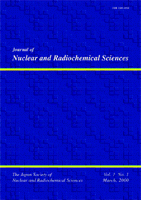Volume 18
Displaying 1-6 of 6 articles from this issue
- |<
- <
- 1
- >
- >|
Notes
-
2018Volume 18 Pages 1-4
Published: 2018
Released on J-STAGE: March 01, 2019
Download PDF (497K)
Articles
-
2018Volume 18 Pages 5-8
Published: 2018
Released on J-STAGE: March 01, 2019
Download PDF (487K) -
2018Volume 18 Pages 9-12
Published: 2018
Released on J-STAGE: March 01, 2019
Download PDF (172K)
Notes
-
2018Volume 18 Pages 13-15
Published: 2018
Released on J-STAGE: March 01, 2019
Download PDF (74K)
Articles
-
2018Volume 18 Pages 16-23
Published: 2018
Released on J-STAGE: March 01, 2019
Download PDF (1991K) -
2018Volume 18 Pages 24-31
Published: 2018
Released on J-STAGE: March 01, 2019
Download PDF (812K)
- |<
- <
- 1
- >
- >|
